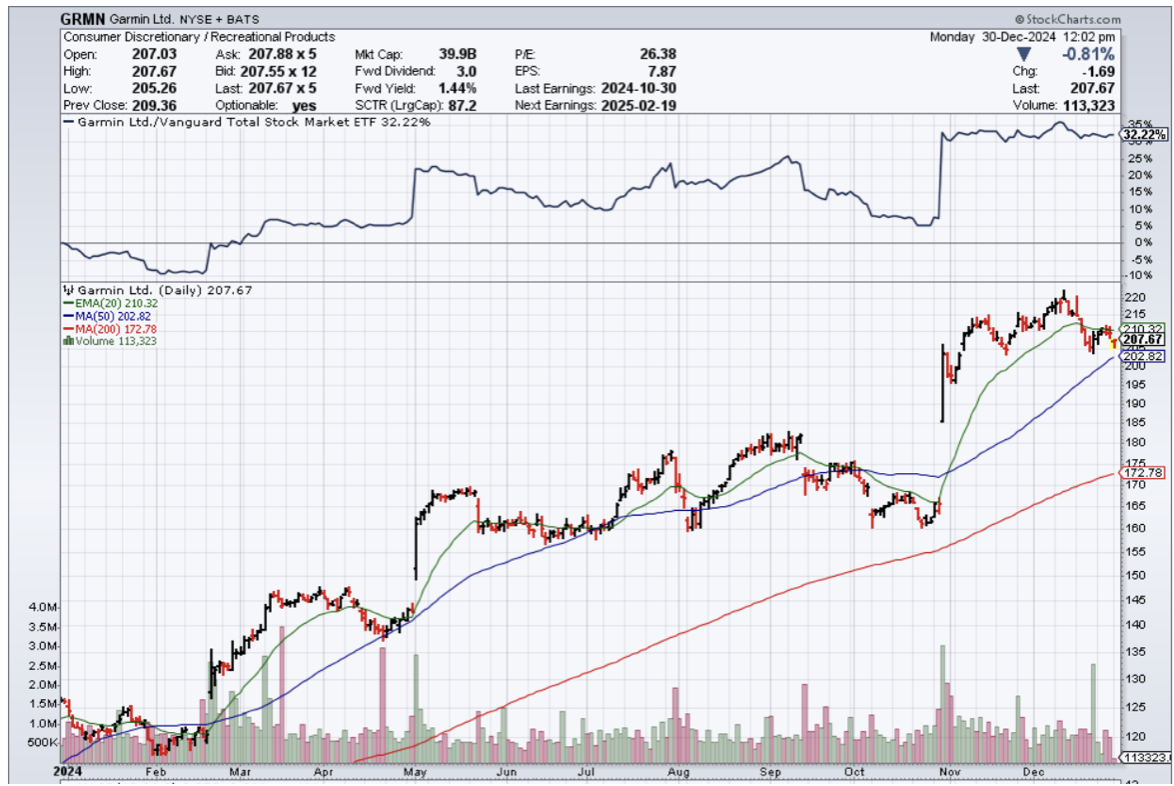Mad Hedge Technology Alerts!
Let me introduce to you one of the hottest trends in tech.
It has been on the tip of everyone's tongue for years, and that might be an understatement, but the interaction of the Internet of Things (IoT) and artificial intelligence (AI) offers companies a wide range of advantages.
In order to get the most out of IoT systems and to be able to interpret data, the symbiosis with AI is almost a must.
If the Internet of Things is merged with data analysis based on artificial intelligence, this is referred to as AIoT.
Moving forward, expect this to be the hot new phrase in an industry backdrop where investors love these hot catchphrases and monikers.
What is this used for?
Lower operating costs, shorter response times through automated processes, and helpful insights for business development are just a few of the notable advantages of the Internet of Things.
AI also offers a variety of business benefits: it reduces errors, automates tasks, and supports relevant business decisions. Machine learning as a sub-area of AI also ensures that models – such as neural networks – are adapted to data. Based on the models, predictions and decisions can be made. For example, if sensors deliver new data, they can be integrated into the existing modules.
The Statista Research Institute assumes that there will be 200 billion networked devices by 2026.
This is exactly where AI comes into play, which generates predictions based on the sensor values received.
However, many companies are still unable to properly benefit from the potential of connecting IoT and AI, or AIoT for short.
They are often skeptical about outsourcing their data - especially in terms of security and communication.
In part because the increased number of networked devices, which requires the connection of IoT and AI, increases the security requirements for infrastructure and communication structure enormously.
It is not surprising that companies are unsettled: Industrial infrastructures have grown historically due to constantly increasing requirements and present companies with completely new challenges, which manifest themselves, for example, in an increasing number of networked devices. With the combination of IoT and AI, many companies are venturing into relatively new territory.
By connecting IoT and AI, a continuous cycle of data collection and analysis is developing.
But, companies can no longer deny the advantages of AIoT because this technical combination makes networked devices and objects even more useful.
Based on the insights generated by the models, those responsible can make decisions more easily and reliably predict future events. In this way, a continuous cycle of data collection and analysis develops. With predictive maintenance, for example, production companies can forecast device failures and thus prevent them.
The combination of the two technologies also makes sense from the safety point of view: continuous monitoring and pattern recognition help to identify failure probabilities and possible malfunctions at an early stage – potential gateways can thus be better identified and closed in good time.
The result: companies optimize their processes, avoid costly machine failures, and at the same time reduce maintenance costs and thus increase their operational efficiency.
In this way, IoT and AI represent a profitable fusion: While AI increases the benefit of existing IoT solutions, AI needs IoT data in order to be able to draw any conclusions at all.
AIoT is, therefore, a real gain for companies of all sizes. They thus optimize processes, are less prone to errors, improve their products, and thus ensure their competitiveness in the long term.
Some hardware, software, and semiconductor stocks that will offer exposure into AIoT are Emerson Electric Co. (EMR), Garmin (GRMN), Ambarella (AMBA), Nvidia (NVDA), DexCom (DXCM), Cisco (CSCO), Intel (INTC), and Qualcomm (QCOM).
Mad Hedge Technology Letter
December 27, 2024
Fiat Lux
Featured Trade:
(THE TRUTH ABOUT AUTOMATION AND BANKING)
(SQ), (PYPL), (APPL), (AMZN)
Automation is taking place at warp speed, displacing employees from all walks of life.
According to a recent report, the U.S. financial industry will depose of 400,000 workers in the next decade because of automating efficiencies.
Yes, humans are going the way of the dodo bird, and banking will effectively become algorithms working for a handful of executives and engineers.
The x-factor in this equation is the $150 billion annually that banks spend on technological development in-house, which is higher than any other industry.
Welcome to the world of lower costs, shedding wage bills, and boosting performance rates.
We forget to realize that employee compensation eats up 50% of bank expenses.
The 400,000 job trimmings would result in 20% of the U.S. banking sector getting axed.
The hyped-up “golden age of banking” should deliver extraordinary savings and premium services to the customer at no extra cost.
This iteration of mobile and online banking has delivered functionality that no generation of customers has ever seen.
The most gutted part of banking jobs will naturally occur in the call centers because they are the low-hanging fruit for automated chatbots.
A few years ago, chatbots were suboptimal, even spewing out arbitrary profanity, but they have slowly crawled up in performance metrics to the point where some customers are unaware that they are communicating with an artificial engineered algorithm.
The wholesale integration of automating the back-office staff isn’t the end of it, the front office will experience a 30% drop in numbers, sullying the predated ideology that front-office staff are irreplaceable heavy hitters.
Front-office staff has already felt the brunt of downsizing, with purges carried out from 2022 representing a twelfth year of continuous decline.
Front-office traders and brokers are being replaced by software engineers as banks follow the wider trend of every company transitioning into a tech company.
The infusion of artificial intelligence will lower mortgage processing costs by 30%, and the accumulation of hordes of data will advance the marketing effort into a smart, multi-pronged, hybrid cloud-based, and hyper-targeted strategy.
The last two human bank hiring waves are a distant memory.
The most recent spike came in the 7 years after the dot com crash of 2001 until the sub-prime crisis of 2008, adding around half a million jobs on top of the 1.5 million that existed then.
After the subsidies wear off from the pandemic, I do believe that the banking sector will quietly put in the call to trim even more.
The longest and most dramatic rise in human bankers was from 1935 to 1985, a 50-year boom that delivered over 1.2 million bankers to the U.S. workforce.
This type of human hiring will likely never be seen again in the U.S. financial industry.
Recomposing banks through automation is crucial to surviving as fintech companies like PayPal (PYPL) and Square (SQ) are chomping at the bit, and even tech companies like Amazon (AMZN) and Apple (AAPL) have started tinkering with new financial products.
And if you thought that this phenomenon was limited to the U.S., think again, Europe is by far the biggest culprit by already laying off 102,000 employees in 2021, more than 10x higher the number of U.S. financial job losses, and that has continued in 2022, 2023 and 2024.
In a sign of the times, the European outlook has turned demonstrably negative, with Deutsche Bank announcing layoffs of 40,000 employees as it scales down its investment banking business.
Don’t tell your kid to get into banking because they will most likely be feeding on scraps at that point.
THE LAST STAGE OF HUMAN-FACING BANK SERVICES IS NOW!





